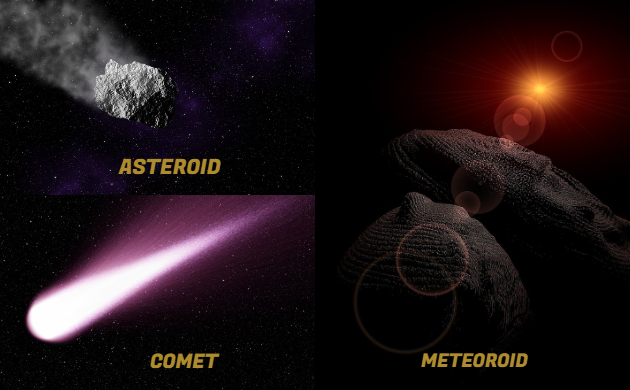
Exploring the Cosmos: How Do Asteroids Differ from Comets?
The cosmos is a vast expanse filled with intriguing celestial objects, and among these are asteroids and comets. While they share some similarities, they are distinct entities with unique characteristics, origins, and behaviors. In this comprehensive article, we will embark on a cosmic journey to understand the fundamental differences between asteroids and comets, shedding light on these captivating remnants of our solar system’s formation.
Origins and Formation
Asteroids: The Rocky Remnants
Asteroids are primarily composed of rock and metal. They are remnants of the early solar system, often referred to as “planetesimals.” These planetesimals never coalesced into full-fledged planets due to the gravitational influence of Jupiter. Asteroids are essentially leftover building blocks that never became part of a larger celestial body. They are found primarily in the asteroid belt, a region located between the orbits of Mars and Jupiter.
Comets: The Icy Wanderers
Comets, on the other hand, are composed mainly of ice, dust, and rocky material. They are often described as “dirty snowballs.” Comets originate from the frigid outer regions of the solar system, particularly the Kuiper Belt and the Oort Cloud. These icy bodies are thought to be remnants from the early solar system and are characterized by their highly elliptical orbits that take them on long journeys around the Sun, often venturing deep into the solar system before swinging back to the outer reaches.
Physical Characteristics
Asteroids: Rocky and Solid
Asteroids are solid, rocky objects with irregular shapes. They vary in size from a few meters to hundreds of kilometers across. Some of the largest asteroids, like Ceres, are even large enough to be considered dwarf planets. Asteroids are typically devoid of atmospheres and have surfaces marked by craters, grooves, and sometimes even evidence of past geological activity.
Comets: Icy Nuclei and Tails
Comets have a distinct appearance characterized by a central icy nucleus, often just a few kilometers in diameter, surrounded by a glowing coma and one or more tails. As a comet approaches the Sun, solar radiation causes the nucleus to release gas and dust, forming a bright coma and a tail that always points away from the Sun due to the solar wind. The tails of comets can be breathtaking and can stretch across vast stretches of space.
Orbital Characteristics
Asteroids: More Predictable Orbits
Asteroids typically have more predictable and less eccentric orbits compared to comets. They tend to stay within the confines of the asteroid belt or may cross the orbits of nearby planets but do so with relatively stable trajectories. This predictability makes asteroids easier to track and study.
Comets: Highly Elliptical Orbits
Comets have highly elliptical orbits that take them from the distant reaches of the solar system, where they are frozen and dormant, to close encounters with the Sun, where they become active and develop their characteristic tails. The unpredictable nature of cometary orbits means that their appearances are often surprising, with some being visible from Earth only once in a lifetime, while others return at regular intervals.
Composition and Spectral Characteristics
Asteroids: Rock and Metal
Asteroids are primarily composed of rock and metal. Their spectral characteristics vary, with some showing evidence of metal content, while others exhibit silicate features. These differences suggest diverse origins and evolutionary histories among asteroids.
Comets: Icy and Volatile
Comets are known for their icy compositions, primarily consisting of water ice, carbon dioxide, methane, and other volatile compounds. When they approach the Sun, these ices sublimate, producing the coma and tails. Comets are also rich in dust and organic molecules, making them valuable targets for studying the building blocks of life.
Conclusion
Asteroids and comets, while both fascinating celestial objects, are distinct in their origins, compositions, behaviors, and appearances. Asteroids are rocky remnants of the early solar system, often found in the asteroid belt, with more predictable orbits and solid, rocky structures. In contrast, comets are icy wanderers originating from the frigid outer reaches of the solar system, characterized by highly elliptical orbits, icy nuclei, and the development of spectacular tails as they approach the Sun.
Studying these cosmic bodies not only provides insights into the history and formation of our solar system but also offers valuable information about the potential threats and resources that exist beyond our planet. As our understanding of these celestial wanderers continues to grow, so does our appreciation for the wonders of the cosmos.
